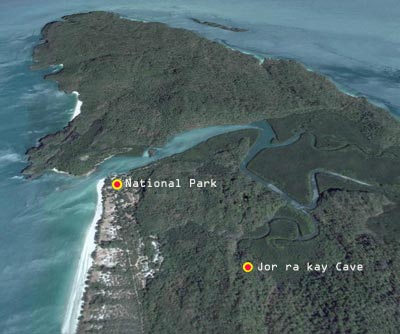Tarutao Geographical Features
 |
The 51 islands of the park archipelago lie in the Andaman Sea from 20-70 km.. off the extreme southwest coast of peninsular Thailand. Tarutao, the largest of the islands, is 26.5 km. long and 11 km. wide. The topography is mostly mountainous (highest point 708 m.) with a few broad plains and valleys. Semi-evergreen rain-forest blankets about 60 percent of the island, and pure mangrove swamps are found in several areas. Long sandy beaches lie along the western coast from Pante Bay to Makham Bay, and at Talo Udang Bay in the south. |
| Weather Condition |
Tarutao and the west coast of peninsular Thailand are subject to a monsoon climate. In the summer months high temperatures in central China cause the air to rise, thus creating a massive low pressure area. This draws wind from the cooler area over the Indian Ocean. The winds coming off the Indian Ocean pick up moisture and dump heavy rains on the west coast of peninsular Thailand from May through October. Normally 250-400 mm. of rain falls in each of these months. The other six months of the year receive little or no rain. Total yearly rainfall averages about 2500 mm. The monsoon winds make boat travel dangerous from May through October; that is why visitors are encouraged to come to the park from November through April. |
| Varieties of Plants and Wild Animals |
For more extensive details on Tarutao National Park's natural resources, see the following publications in the library, but please do not remove them from the library. |
Marine Life: The area of Adang-Rawi contains many coral reefs of high species diversity. Degradation of some reefs by natural and man-made causes is significant but has not affected the overall ecological value of the park. The map insert shows some of the more interesting coral reefs in the park. The damage to some reefs are due to dynamite fishing, storm damage and crown-of-thorns starfish predation. |
